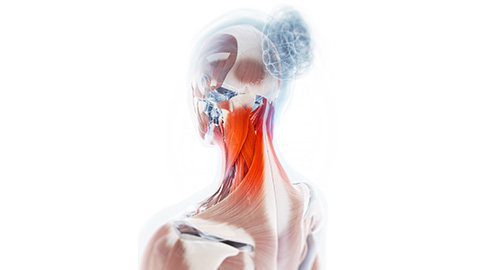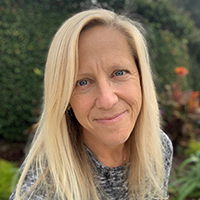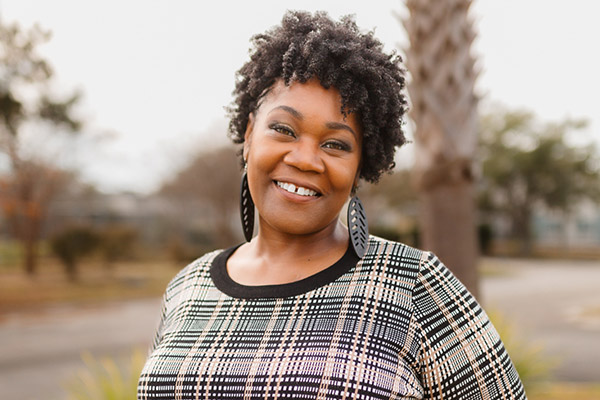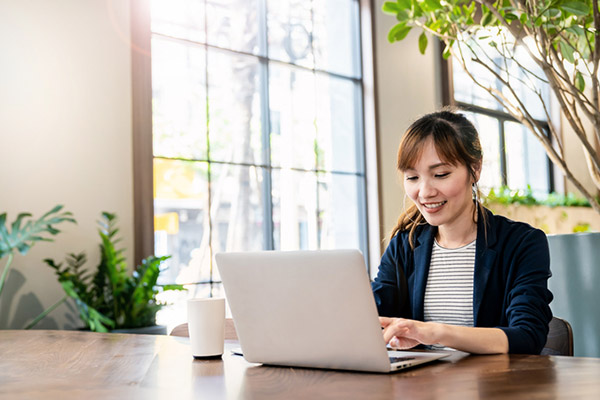03/04/2022

The relationship between the sternocleidomastoid and the upper traps is a lot more complicated than you think. Between the up and down, yes and no, and round and round decisions we all make every day, the balancing act of these two muscles can be like a seesaw that has definitely seen better days. Join Allison as she expands the posterior triangle of the neck and offers some insights to bring a little balance back.
Contact Allison Denney: rebelmt@abmp.com
Allison’s column in Massage & Bodywork magazine:
“The QL and the Psoas: The Epitome of Codependency,” by Allison Denney, Massage & Bodywork magazine, January/February 2022, page 24.
“The Hand: A User’s Guide,” by Allison Denney, Massage & Bodywork magazine. November/December 2021, page 81.
“Feelization: Connect with Clients on a Deeper Level,” by Allison Denney, Massage & Bodywork magazine, September/October 2021, page 85.

This podcast sponsored by:
Anatomy Trains:
Anatomy Trains is a global leader in online anatomy education and also provides in-classroom certification programs for structural integration in the US, Canada, Australia, Europe, Japan, and China, as well as fresh-tissue cadaver dissection labs and weekend courses. The work of Anatomy Trains originated with founder Tom Myers, who mapped the human body into 13 myofascial meridians in his original book, currently in its fourth edition and translated into 12 languages. The principles of Anatomy Trains are used by osteopaths, physical therapists, bodyworkers, massage therapists, personal trainers, yoga, Pilates, Gyrotonics, and other body-minded manual therapists and movement professionals. Anatomy Trains inspires these practitioners to work with holistic anatomy in treating system-wide patterns to provide improved client outcomes in terms of structure and function.
Website: anatomytrains.com
Email: info@anatomytrains.com
Facebook: facebook.com/AnatomyTrains
Instagram: instagram.com/anatomytrainsofficial
YouTube: youtube.com/channel/UC2g6TOEFrX4b-CigknssKHA
Rebel Massage Therapist:
My name is Allison. And I am not your typical massage therapist. After 20 years of experience and thousands of clients, I have learned that massage therapy is SO MUCH more than a relaxing experience at a spa. I see soft tissue as more than merely a physical element but a deeply complex, neurologically driven part of who you are. I use this knowledge to work WITH you—not ON you—to create change that works. This is the basis of my approach. As a massage therapist, I have worked in almost every capacity, including massage clinics, physical therapy clinics, chiropractor offices, spas, private practice, and teaching. I have learned incredible techniques and strategies from each of my experiences. In my 20 years as a massage therapist, I have never stopped growing. I currently have a private practice based out of Long Beach, California, where I also teach continuing education classes and occasionally work on my kids. If they’re good.
Website: rebelmassage.com
IG: instagram.com/rebelmassagetherapist
YouTube: youtube.com/c/RebelMassage
0:00:00.0 Speaker 1: This episode is brought to you by Rebel Massage Deep Tissue Body Butter, crafted because oil is too slick and lotion absorbs too fast. These organic professional grade body work butters give you the grip you've been looking for. The best techniques in the world can get lost without the right product to support them. Try the Get A Grip version for a more specific focused work or the Total Meltdown version for that grip with a little extra glim. Made by a massage therapist for massage therapists. Head over to rebelmassage.com to get your grip today.
0:00:48.5 Allison Denney: Hi, my name is Allison Denney, and this is The Rebel MT podcast, where you'll hear me forcibly colliding the worlds of anatomical jargon and humor. I believe that when you know your anatomy, the what, and you know your physiology, the how, the techniques will follow. But the loads of Latin and the gobs of Greek can make a cranium convulse. It is a little overwhelming to dip your toe into the sea of anatomical knowledge, only to find that it is a bottomless ocean. You are smart, but this is intimidating. You will get there eventually. In the meantime, let's look at things differently so that you will actually want to take a swim or at least hop on a boat and take a peak at what's under the surface.
0:01:36.4 AD: Teetering between two choices is just playing part of life, many, multiple choices, really. What college to go to, what career path to choose, what to wear to the interview, and what the heck to make for dinner? It is non-stop. Balancing the options, no matter how large or small the decision can be an excruciating process, so excruciating sometimes that it can make a person's head spin. But what makes it so hard is having to actually know what you like. Sure, some things are easy. Ice cream. Coffee. Coffee ice cream. But some things, not so much. Like if you find yourself with some free time, do you get a project done? Do you tackle that pile of laundry that is haunting your closet? Do you get outside and move your body? Do you make some social plans and reconnect? Or do you blow it all off and Netflix or Instagram or TikTok and chill or rest or hang? Or whatever. These decisions are not so easy. A moment like this begs the question, "What is it that you really want to do? What is it that you need to do? Should you go left or right? Should you join a gym? Do you want fries with that? If getting the things done that you need to do will make you happy in the long run, do you do that? Do you even have the energy to make that happen? Or do you just need today to completely check out? Is that even okay? What is happiness anyway?"
0:03:09.1 AD: Moments like these, which can each feel like a lifetime are enough to make a person have an existential crisis. The rigorous up, down, yes and no is quite literally the definition of head spinning, and a head can take only so much spinning before it glitches and decides it's just going to do whatever it wants to do, and we no longer have a say in it. The downwards spiral of indecision is a dark one. Beyond the lack of character growth we would have created with clear decisive action, our physical bodies begin to feel the pain of the back and forth, not only does anxiety and sleepless-ness begin to creep in, but the soft tissue in our bodies react. They form many protests to stop all the chaos. Our bones begin to grow weary from being under prepared, our fascia begins to clamp down out of the fear of the unknown, and our muscles quite literally decide to take over. With the nodding yes and shaking no and tilting our heads to the side in uncertainty, all of the muscles of the neck that are tasked with moving the skull in said directions get exhausted.
0:04:15.3 AD: And the skull being the bowling ball that it is, does not make it easy on those neck muscles. The weight of being human sets the top our skinny little necks, like a reminder that we are never done doing whatever it is that we are supposed to be doing. And letting it drop forward to numb ourselves on a screen or drop backward on to the poorly placed couch cushion to stare into space if the ceiling wasn't always in the way, is like a teeter-totter that is slowly getting rusty and falling apart. With a little review of the lever system, you may or may not have learned in massage school, we will remind you that there are three types of levers in the world; first, second and third class. I'm not going to review them in this episode because I don't know about you guys, but when I learned about them in school, I was like, "What the actual heck does this have to do with massage?" It turns out a lot, but I'll save that one for a future episode. I will remind you though that one of them, the first class, is like an actual see-saw. The base is in the middle part of the plank of wood and the see-saw tilts to whichever side has the bigger kid on it. In technical terms, the base is the fulcrum, the bigger kid is the effort and the smaller kid is the load.
0:05:28.5 AD: The neck and head have the same system going on. If you can picture the cervical vertabrae to be the fulcrum or base, and then the bigger kid switches between the anterior and posterior neck muscles. When we look down, the lighter kid is sitting on the back of the skull, and when we look up, the lighter kid is sitting on the chin, except because humans are way more complicated than a teeter-totter the head can do a lot more than just nod up and down. Some of you may be familiar with the triangles of the neck. Long story short, the sternocleidomastoid divides the lateral neck into two chucks; the anterior triangle and the posterior triangle. And if we look at the posterior triangle, bordered by the SCM in the front, the trapezius in the back and the clavicle at the bottom, we've got the perfect teeter-totter base. And again, because humans make everything more complicated, there are a handful of muscles inside that triangle that wanna pull the head into way more actions than just forward and backward.
0:06:29.5 AD: The crucial piece of anatomy I wanna focus on today though, is the anterior and posterior borders of that triangle, the SCM and the upper traps. These two muscles which now act as antagonists to each other in our everyday lives, were once unified in the womb and separated as it were at birth. The SCM launches up from the sternum and the clavicle and inserts into the mastoid process at the lateral portion of the nuchal line of the of the occipital. Conversely, the traps originate at the external occipital protuberance, lovingly known as the EOP, and the medial portion of the nuchal line of the occipital among a host of other soft tissue and bony landmarks that bring it down the spine. It then drops down and inserts onto the scapula and the clavicle. But it is the insertion of the SCM and a portion of the origin of the traps that are most notable. The ridge at the base of the skull is called the nuchal line of the occipital. Side note there is a superior one and an inferior one, but the bigger point is this line goes from the center of the back of the skull, the EOP, and extends all the way out to the mastoid process, which is the tiny hand hold dropping down from the skull behind the ear. The traps have taken over at the back half of that line and the SCM hangs on to the front half. And if you remember that connective tissue has no disconnect, where these two muscles converge has no separation.
0:07:58.2 AD: They were indeed actually one unit of soft tissue in the womb, then they divided in development like a curtain at a play to reveal the deeper layer of muscles, the scalenes, the levator scapulae, the splenius capitis, and the semispinalis muscles, which act like Punch and Judy, pulling strings and wreaking havoc. Back to the curtains though, the SCM now lives at the front of your neck and pulls the head to move it forward and down, and the traps now live at the back of your neck and tugs at the head to lift it up and back. You can start to see how these muscles and the structure as a whole is a lot like a see-saw, a highly complicated, very unstable see-saw but a see-saw nonetheless.
0:08:44.8 AD: Let's turn our focus to the decision-making process of how to work with this teetering madness when it creates an issue for your client. The issues can span from tension, headaches to TMJ, to muscle spasms and limited range of motion, to name a few, whatever the asymmetry is creating, bringing balance back to an off-kilter balancing act is the goal. Starting off with your client supine focusing, let's say, on the left SCM, use your right hand to cradle the head and laterally tilt it gently to the left. This softens the muscles and the surrounding fascia and invites the work in. With the soft thumb and the side of your first finger compress into the belly of the muscle and slowly work your way up and down, feeling for areas of tension and holding patterns. When you locate something, hold on with a little more pressure and use your right hand to guide the head to the right, adding in a slight rotation to accentuate your work in the same way that a live play uses lighting to emphasize a particular scene.
0:09:47.3 AD: Remember though, that this muscle is not just the robe protrusion that we see in the front of the neck, it is also its attachments at the sternum and the mastoid process. Leaving the head rotated to the right, use a flat palm or pads of your fingers to create friction into the connective tissue that is anchoring this muscle on to its respective bones. All of this work combats the general forward head posture and popularity of looking down at screens or maybe that crochet project that is trending. Reminding the SCM that it can actually be long again, comes as quite a relief. Turning your client on their side, switch your focus to the upper traps. Have your client slide to the side of the table closest to you so that their back is close to the edge of the table. Again, focusing for the sake of example, on the left side of the neck, stand at your client's back, lift their left arm up away from their torso, place your arm under theirs and cup your left hand onto the front of their shoulder, this allows you to move the insertion attachments of the traps while you do your work.
0:10:51.3 AD: Start by gently pulling their shoulder down away from their ear, and at the same time, use your right hand to work up the posterior neck. You can use your fingers, knuckles or thumbs here, keeping in mind that the posterior neck muscles are far more abundant and ready for a little more aggressive approach. With the movement that you are creating in the shoulder at the same time, have your client slowly tuck their chin to their chest while you slide up their upper traps with your right hand. This work is more focused on the superficial layer of fascia, then the muscle fibers themselves. The fascia here envelops the traps and has begun to clamp down in an effort to hold the head up from falling into that trending crochet project. Using deep cladding strokes coupled with the passive movement of the client's shoulder and the active movement of their head, freeze the muscle tissue from the surrounding fascia and reminds the traps that they do actually have a say in what the head does.
0:11:46.4 AD: The truth is, it takes a lot of work to know how to make a decision. It involves knowing all the implications of each step you take. For your clients, the never-ending battle between yes and no, begets a breakdown of the most important see-saw in the world, and for you as a body worker, it involves understanding how the work you do can best restore that balance. For everyone though, the choices will never stop coming, and that is a good thing. What is most important, ultimately, is that we hone the skills to navigate them with ease. And here we are, the end of the episode, thank you to the extraordinary crew over at ABMP for helping me get my words into your ears. And if you wanna get any of your words into my ears or more accurately into my brain via my eye balls from a computer screen, drop me a line at rebelmt@abmp.com, that's R-E-B-E-L-M-T @abmp.com. I always wanna hear your questions, comments, suggestions or salutation. Also, if you're interested in checking out anything else, I'm doing head over to rebelmassage.com where you will find all sorts of fun things to click on, like homemade organic products for your practice, cool links to continuing education classes, thoughts I have typed up and posted here and there, and other rebel massage dabblings.
0:13:11.1 S1: Members are loving ABMP Five-Minute Muscles and ABMP Pocket Pathology, to quick reference web apps included with abmp membership. ABMP Five-Minute Muscles delivers muscle-specific palpation and technique videos plus origins, insertions and actions for the 83 muscles most commonly addressed by body workers. ABMP Pocket Pathology created in conjunction with Ruth Werner, puts key information for nearly 200 common pathologies at your fingertips and provides the knowledge you need to help you make informed treatment decisions. Start learning today, ABMP members log in at abmp.com and look for the links in the featured benefits section of your member home page. Not a member? Learn about these exciting member benefits at abmp.com/more.





